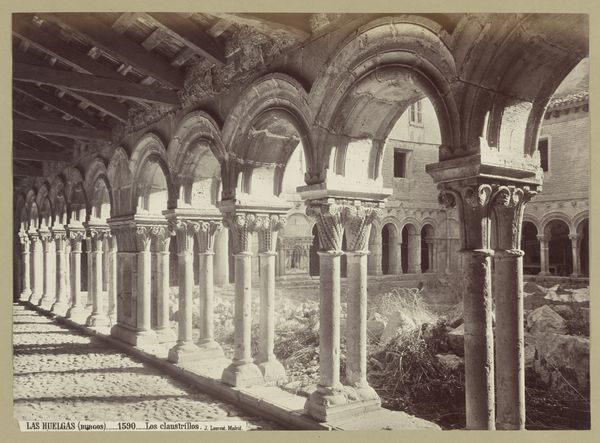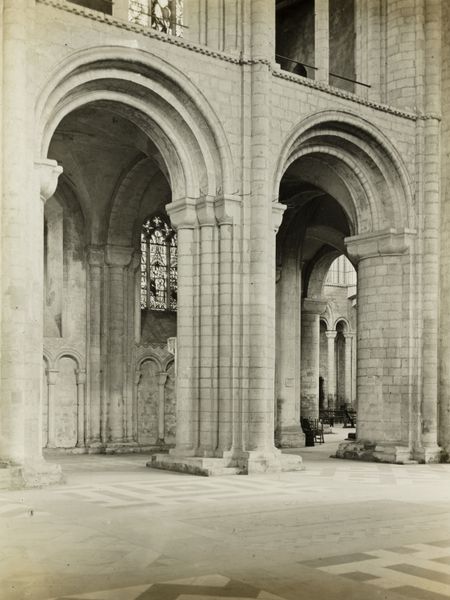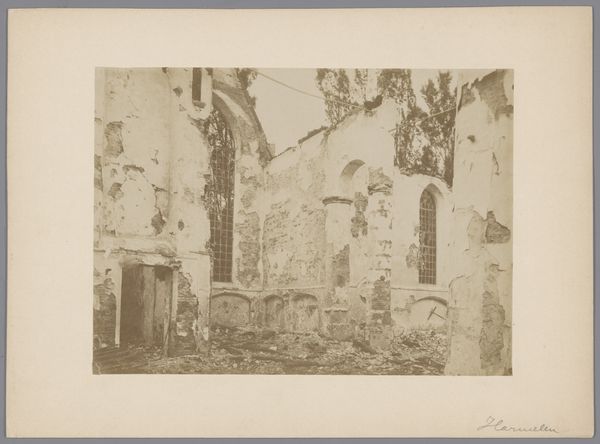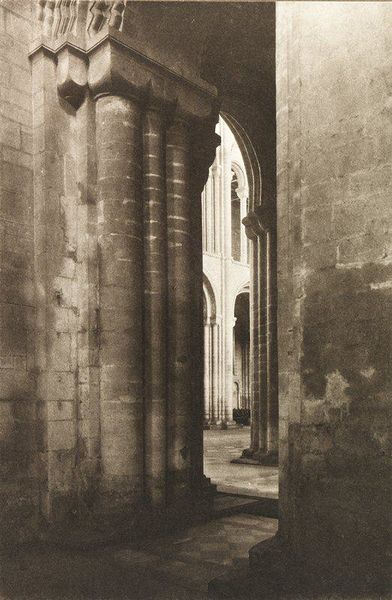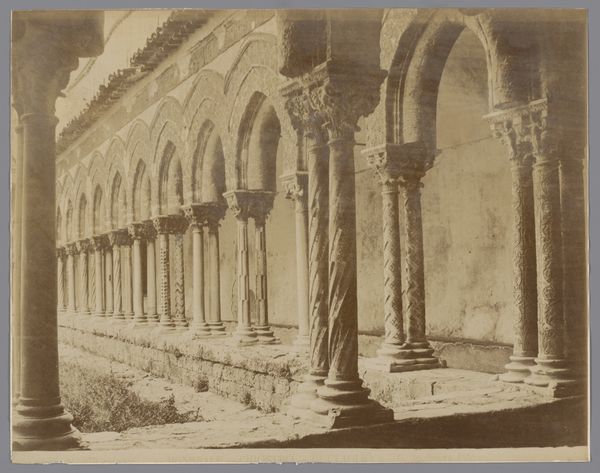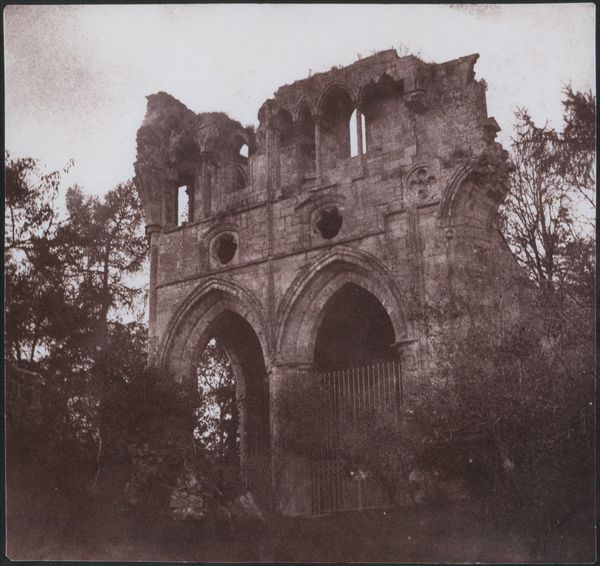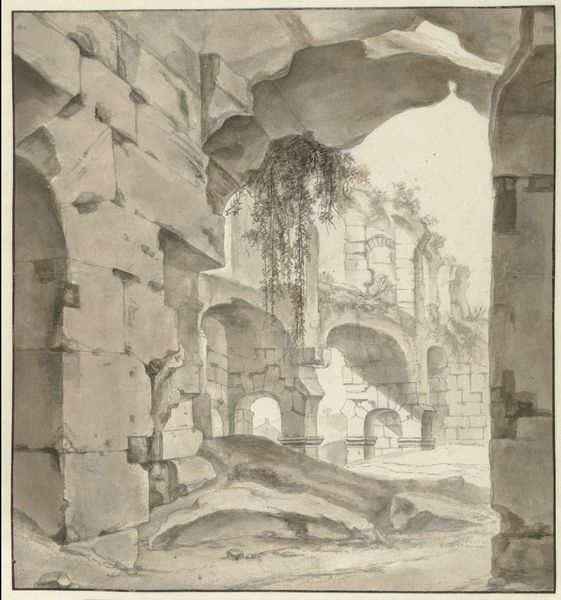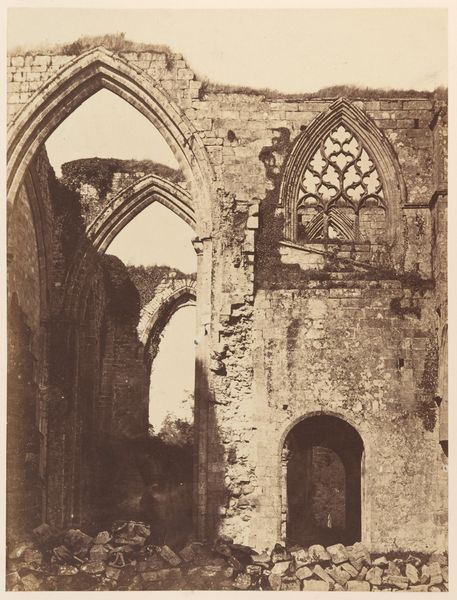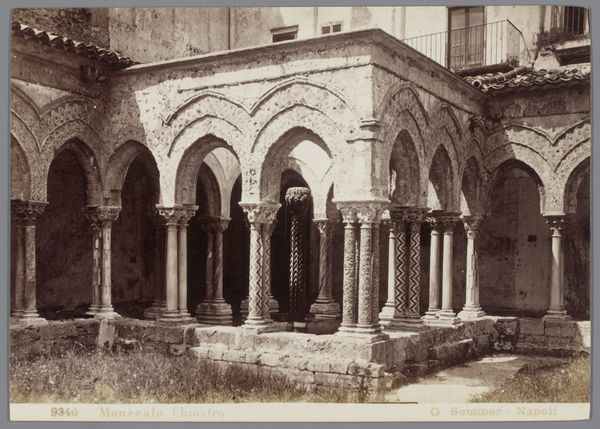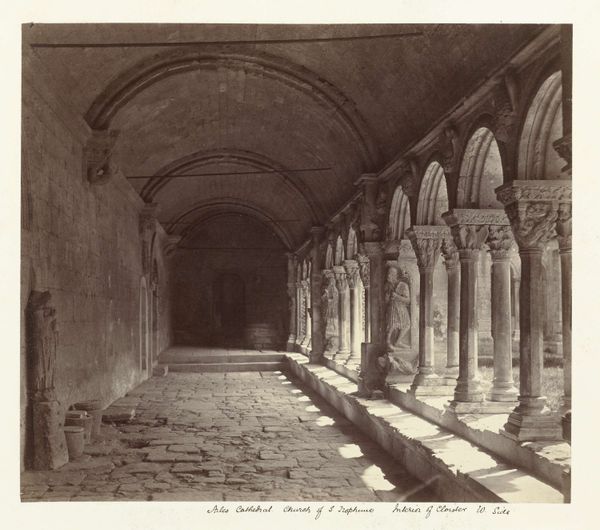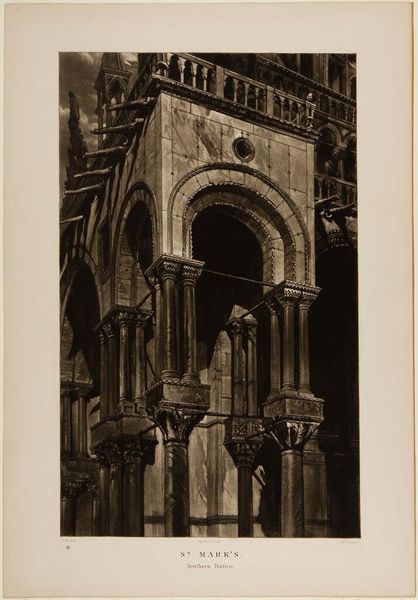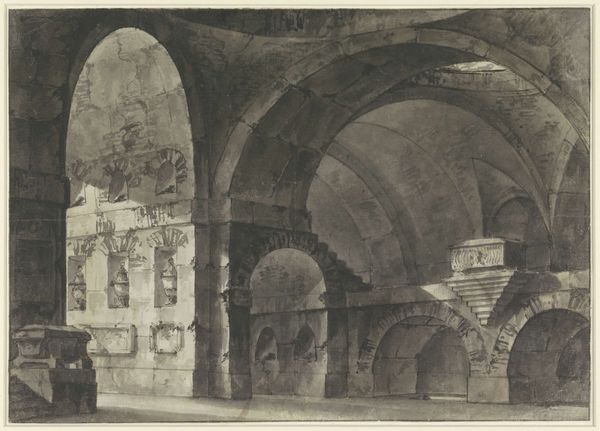
Dimensions: image: 229 x 169 mm
Copyright: © Estate of Albert Renger-Patzsch / DACS 2014 | CC-BY-NC-ND 4.0 DEED, Photo: Tate
Editor: This is Albert Renger-Patzsch's photograph of the Paderborn Westphalia Jesuit Church. The ruined architecture is striking. What do you see in this piece, considering it was taken during a period of significant social upheaval? Curator: Notice the devastation. It speaks to the destructive power of conflict on material culture and societal structures. The image documents the physical cost of war, highlighting the vulnerability of even the most imposing architecture. Editor: So, you're saying the photograph emphasizes the sheer physicality of destruction and how it impacts the very fabric of society? Curator: Precisely. Consider the labor and materials that went into constructing this church, now reduced to rubble. Renger-Patzsch’s lens captures the materiality of loss and its profound social implications. Editor: I never thought about it that way. It really drives home the material consequences of conflict. Curator: It's a powerful reminder. Seeing the damage makes you think about what resources would be needed to rebuild.
Comments
tate 6 months ago
⋮
http://www.tate.org.uk/art/artworks/renger-patzsch-paderborn-westphalia-jesuit-church-p79958
Join the conversation
Join millions of artists and users on Artera today and experience the ultimate creative platform.
tate 6 months ago
⋮
Paderborn Westphalia Jesuit Church is a black and white photograph picturing the interior remnants of a ruined church. A two storey double arch supported by a vaulted arcade cuts across the composition from left to right. Delicate carved stone decorations adorn the walls, arches and columns testifying to the church’s former grandeur. Daylight floods into the church and illuminates the scene, highlighting areas of relief carving. The image, however, speaks of decay and disintegration: pillars have crumbled and collapsed, rubble is strewn across the floor, and plaster covering the walls has worn away to reveal expanses of exposed brickwork.

